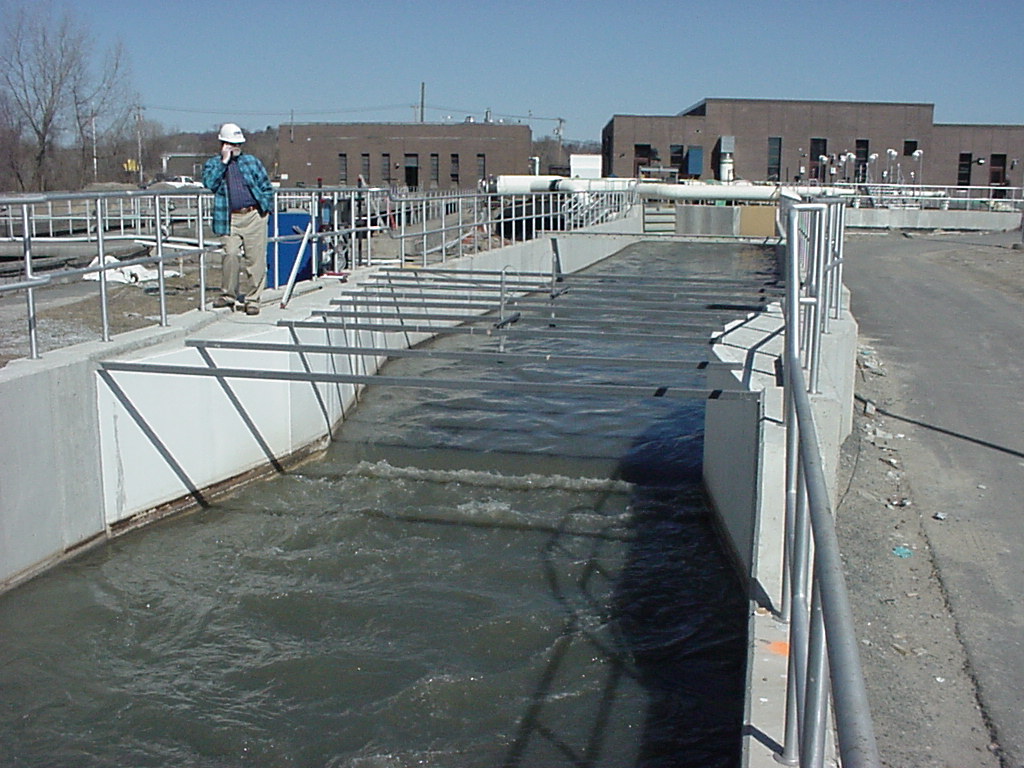Flumes
Which Flume is Right For You?
There are many different types of flumes that can be used in wastewater management systems or in your industrial wastewater systems. Each type of flume has its own advantages and disadvantages, so it is important to choose the right one for your particular application.
TRACOM recommends considering the characteristics of each flume before your company makes a decision. Speak with a specialist at Tracom about which fiberglass flume best meets your needs.
Most Common Flumes
The most common flumes are the Parshall flumes, Trapezoidal, and the Palmer-Bowlus. These three come in a variety of sizes that can measure a wide range of flows. Each has its own unique history, but they can all be used in a variety of applications.
Parshall and Trapezoidal flumes were originally designed for ditch or in-channel applications, while the Palmer-Bowlus was designed to connect to a piped system. Trapezoidal flumes are great for measuring low flows while still allowing for a wide range of flows to be measured. Parshall and Palmer-Bowlus measure higher flows more accurately and are better suited for applications with a constant flow.
Flume Definition and Features
What is a flume?
Flumes are specially shaped, engineered, and static piece of equipment that restrict flow causing an acceleration. This restriction of flow creates a relationship between the fluid level in the flume and the rate of flow allowing for easy sight measurement.
Flumes accelerate fluid from a subcritical flow to a critical or supercritical flow through a few different methodologies:
- Constricting the side walls of the flume.
- Creating slope by manipulating the floor.
- A combination of the above.
Once at a critical or supercritical flow a single head measurement can be used to determine the rate of flow at a single, defined point, notated as Ha. The relationship of fluid level at Ha and rate of flow can be either calculated through theory and formula (long-throated) or determined through lab testing (short-throated).

What are Open Channel Flumes?
Open channel flumes are a type of hydraulic structure that is used to measure and control the flow of water in open channels. They can be made of fiberglass, metal, or concrete. They have a narrowing throat that allows for flow to be accurately measured. There are several shapes and sizes that meet the needs of different applications.
Classes of Flumes
Depending on the style of flume, each of these sections will have a different shape and proportion. The key difference lies in the type of throat, thus breaking flumes into two classes:
Long-throated Flumes – Control the rate of flow with a throat long enough to create a laminar flow while still contained within the throat section. By creating a laminar flow, the discharge rate of long throated flumes can be calculated using fluid mechanics concepts and Ha can be measured anywhere above the throat section of the flume.
Short-throated Flumes – A bit of a misnomer, short-throated flumes may actually be quite large in specified length. They control the flow rate in a curvilinear manner rather than laminar-ly. Due to their curvilinear nature, each style and size of flume has its own highly specific relationship between rate of flow and Ha. Unlike their long-throated counterparts, each style and size of short throated flume has their own set point of measurement Ha. Calibration for this class of flume has been done empirically using other more accurate flow measurement devices to create each flumes discharge table.
Flume Construction
Most flumes have the same 3 basic sections.
Converging section
This section funnels subcritical flow (FLOW MUST BE SUBCRITICAL) into the throat section.
The point of measurement is in this section for all types of flumes. This point is fixed for short throated flumes while variable for long throated flumes
Throat section
Further constricting flow and accelerating it from subcritical to critical or supercritical, this section is essential for the proper functioning of the flume. It is here where the most drastic construction of the sidewalls and elevation changes occur.
Diverging section
Now that the fluid is at a supercritical flow, it can potentially cause downstream scour and erosion. It is the job of the diverging section to slow the flow and help protect the downstream channel.
Note that not all flumes have this section, most notably the H-style and Montana Flumes. These two styles are recommended to discharge vertically into a collection bowl or a pool.
Accuracy of Flumes
Under perfect conditions flumes can be accurate within + (2-5%). Once installed, field conditions can cause accuracy to be closer to + 10%. These are similar accuracies to other open channel flow measurement devices such as wiers.
Advantages of Flumes
While both weirs and flumes measure open channel flow, flumes have some clear advantages. One of the greatest benefits of flumes over weir boxes is that there are many to choose from.
- Measure higher rates of flow.
- Less head loss.
- Easily pass debris.
- Smaller footprint
- Available in many styles and sizes
- Easier to maintain
- More resistant to downstream effects such as submergence.
Flumes for Wastewater Management
Flumes are an important part of wastewater management systems. There are many aspects to consider. When choosing the right flume for your system, you must take into account the channel width, depth, flow rate, and debris.Each type of flume has its own advantages and disadvantages.
Reach out to Tracom or a local representative to discuss the options and select the best flume to accurately measure the flow in your application.

